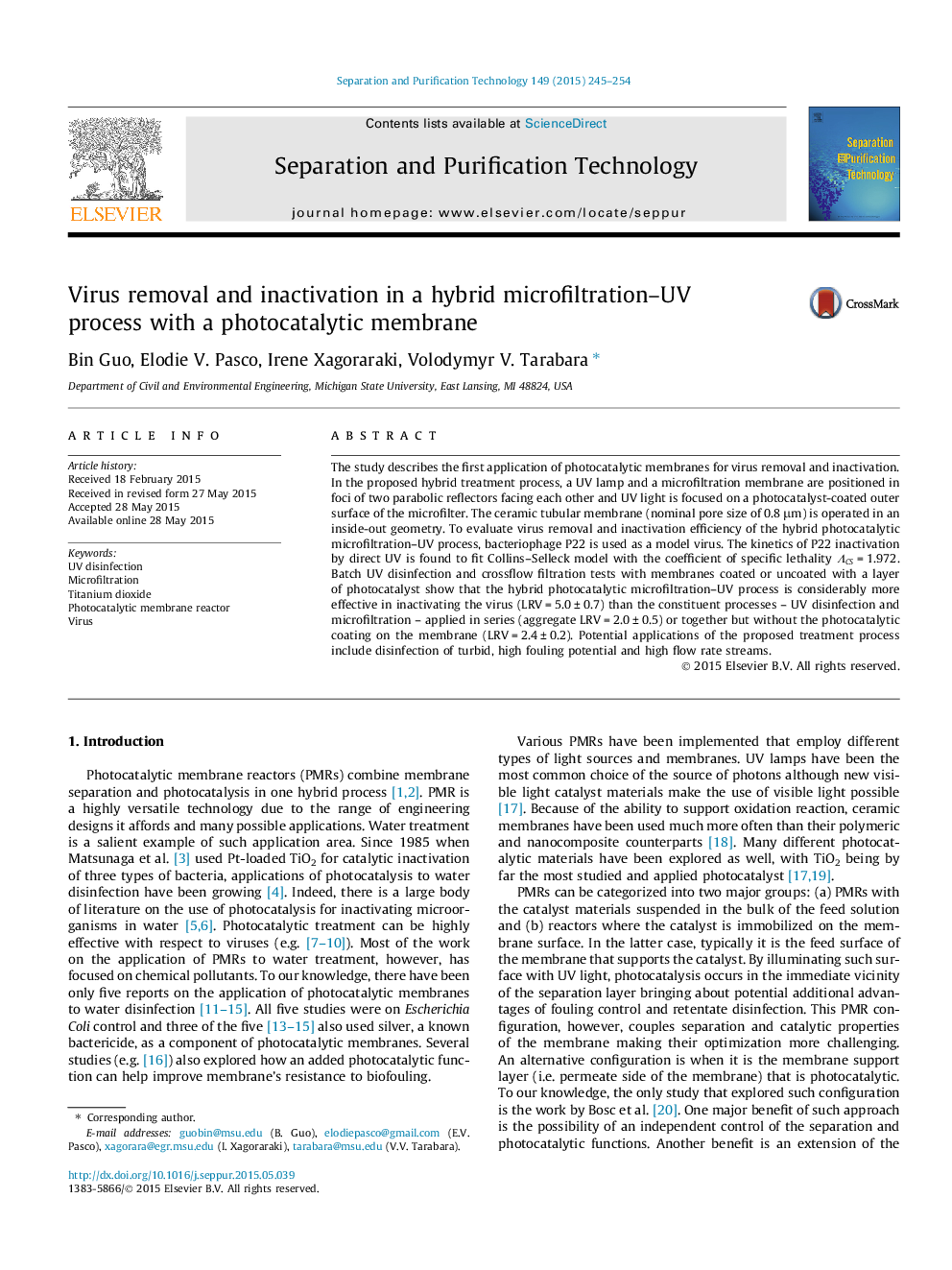| Article ID | Journal | Published Year | Pages | File Type |
|---|---|---|---|---|
| 640587 | Separation and Purification Technology | 2015 | 10 Pages |
•First application of photocatalytic membranes for virus removal and inactivation.•Bacteriophage P22 is used as a model virus.•Original design couples outer surface of a tubular membrane with UV light.•Hybrid photocatalytic UV–microfiltration process is effective in inactivating virus.•Potential applications include treatment of high flow rate, turbid streams.
The study describes the first application of photocatalytic membranes for virus removal and inactivation. In the proposed hybrid treatment process, a UV lamp and a microfiltration membrane are positioned in foci of two parabolic reflectors facing each other and UV light is focused on a photocatalyst-coated outer surface of the microfilter. The ceramic tubular membrane (nominal pore size of 0.8 μm) is operated in an inside-out geometry. To evaluate virus removal and inactivation efficiency of the hybrid photocatalytic microfiltration–UV process, bacteriophage P22 is used as a model virus. The kinetics of P22 inactivation by direct UV is found to fit Collins–Selleck model with the coefficient of specific lethality ΛCSΛCS = 1.972. Batch UV disinfection and crossflow filtration tests with membranes coated or uncoated with a layer of photocatalyst show that the hybrid photocatalytic microfiltration–UV process is considerably more effective in inactivating the virus (LRV = 5.0 ± 0.7) than the constituent processes – UV disinfection and microfiltration – applied in series (aggregate LRV = 2.0 ± 0.5) or together but without the photocatalytic coating on the membrane (LRV = 2.4 ± 0.2). Potential applications of the proposed treatment process include disinfection of turbid, high fouling potential and high flow rate streams.
Graphical abstractFigure optionsDownload full-size imageDownload as PowerPoint slide
